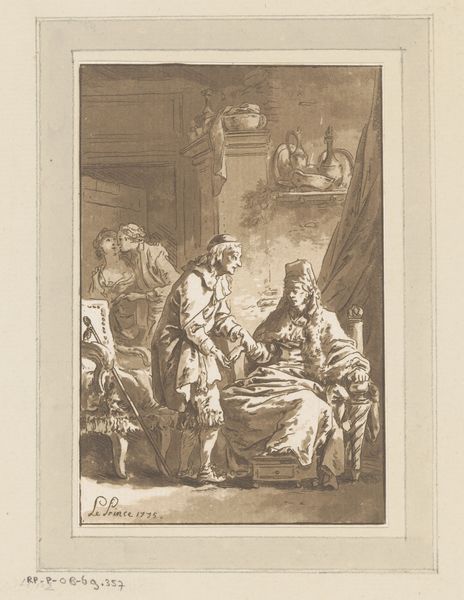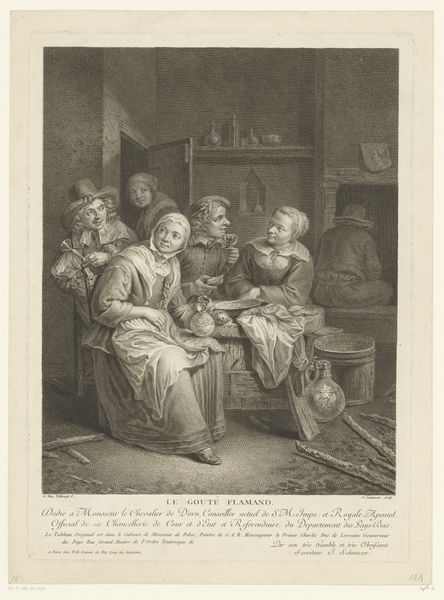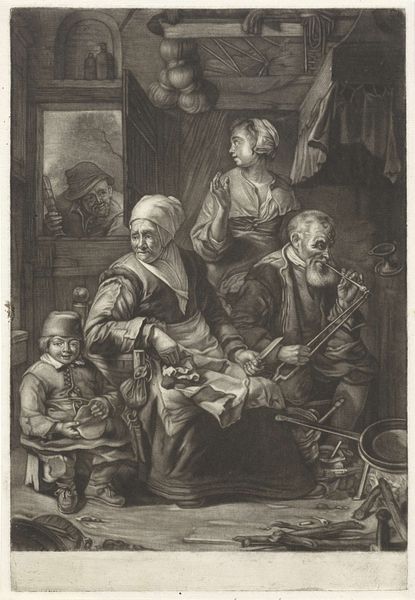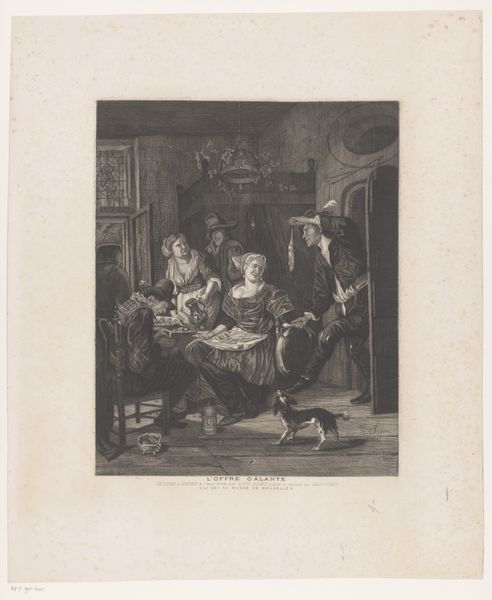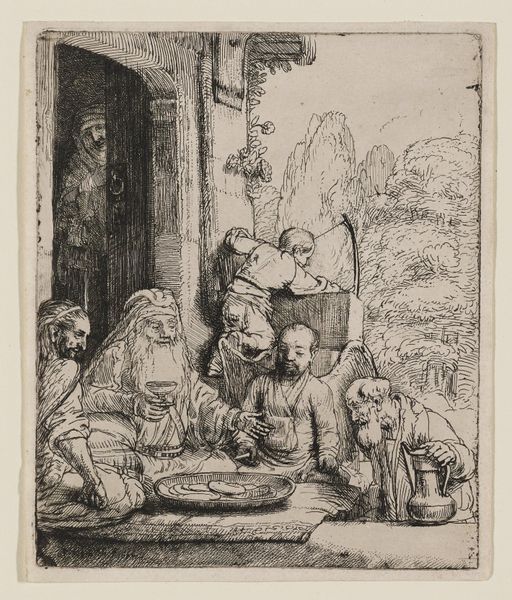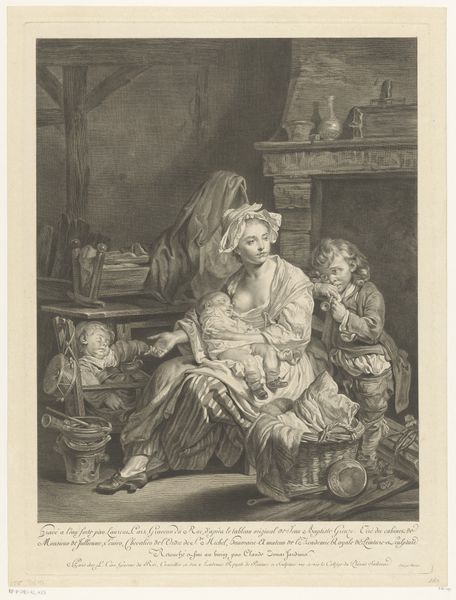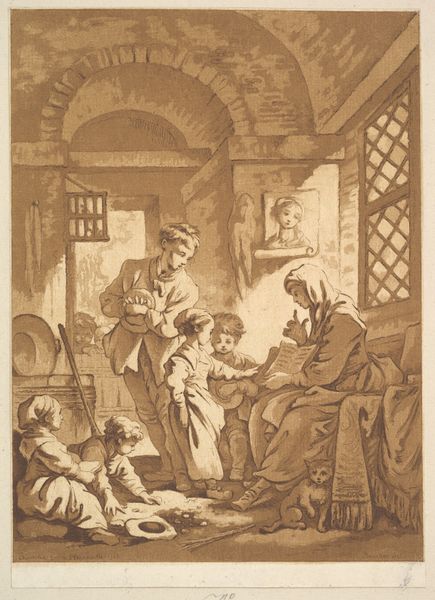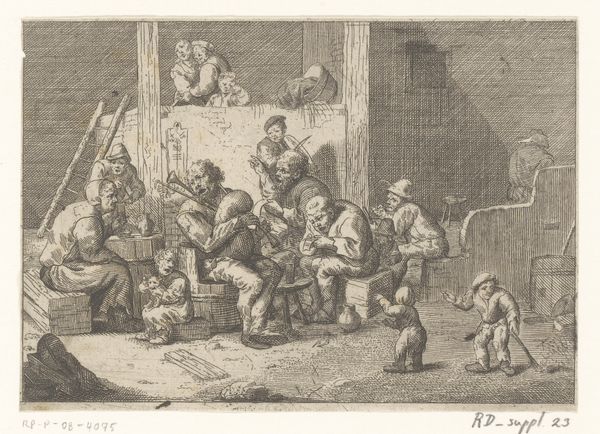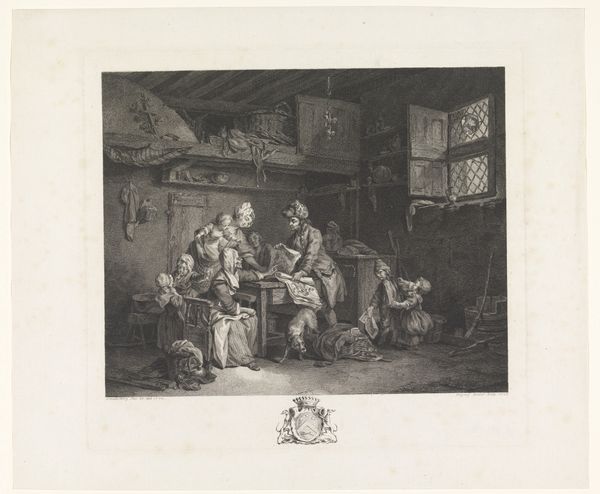
drawing, print, paper, engraving
#
portrait
#
drawing
#
dutch-golden-age
# print
#
paper
#
genre-painting
#
engraving
Dimensions: 436 × 355 mm (sheet)
Copyright: Public Domain
Curator: Immediately striking! The density of detail really creates an intimate interior. What are your thoughts? Editor: Intimate indeed. A bit too cramped, though; a cacophony of domesticity verging on claustrophobia. The expressions are so specific too... there's tension in this cozy scene. Curator: Perhaps the artist, Cornelis Visscher, meant to capture the intensity of 17th-century Dutch domestic life. This engraving, called "The Pancake Woman", dates to about 1651 and offers a snapshot of a working-class family. Editor: Pancakes are interesting here—I read pancakes as simple sustenance but also abundance, especially amidst the squalor and focused intensity on the subjects' faces. Almost like they are reveling in a luxury that’s unexpected here. Do you see an implied social commentary in the rendering of a common subject with that kind of detail? Curator: It certainly reflects broader economic trends, the shift toward increased consumption amongst the working class. Dutch genre painting often idealizes domesticity but pieces like this show the reality of it: hard work and cramped quarters. The "Pancake Woman" herself looks worn but capable, which projects an image of social stability amid changes. Editor: See how she occupies the very center of the image. I think the composition reinforces that idea—with all of these objects of daily life sort of spilling into our space as a viewing public—as if domesticity were a flood. Even the figures who watch through doorways feel like onlookers or, frankly, maybe the viewer too. It emphasizes domestic spaces being watched. The symbolic cat in the corner, as a sort of ever-present companion animal or watcher, definitely enhances that idea. Curator: And that gaze through doorways definitely plays with power and vulnerability in these Dutch domestic interiors. Also, think about the symbolism around making and eating pancakes specifically—a humble food turned into a shared treat. That also becomes a reflection of broader trends in the accessibility of food as part of emerging Dutch consumerism during that era. Editor: I suppose you can really view it as an idealized scene or, like many historical paintings of domesticity, as something very deliberate regarding emerging economies and anxieties over changing class lines in Dutch society. Curator: Indeed. Next time you make pancakes, maybe think of the cultural narratives in that simple meal! Editor: Pancakes: a lot richer of a meal than I thought!
Comments
No comments
Be the first to comment and join the conversation on the ultimate creative platform.

